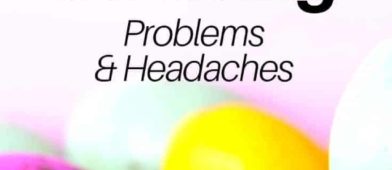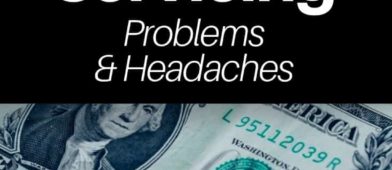It’s been over two and a half years since Trump first enacted a relief policy that hit the pause button on federal student loan bills and their accrual of interest.
The White House’s latest update revealed that the deferment of student loan repayments has been extended once more, but that they’ll recommence at some point in summer 2023.
These developments – and the lack of a precise date – tie in with President Biden’s efforts to deliver on his campaign promise to eradicate thousands of dollars of student debt for millions of Americans around the country. Following stiff opposition from some corners of government and the legal challenges that ensued, those extensive loan forgiveness plans remain tied up in court.
So where does this leave us? What are the implications and time horizons of the proposed loan cancellations? And what could you be doing to capitalize on them?
If you’re unsure where we are at this point, you’re not alone.
We will detail the current state of student loan deferment and forgiveness, before offering practical suggestions on how to leverage these policies to suit your individual circumstances.
🚨 6/30/2023 BREAKING NEWS: The Supreme Court has blocked President Biden’s student loan plan.
Table of Contents
- The Status of Student Loan Deferment
- The Status of President Biden’s $10,000 Student Loan Forgiveness Plan
- Potential Time Lines for Deferment and Forgiveness
- What Should You Do with Your Student Loans?
- 1. You’re Repaying a Private Student Loan
- 2. You’re Repaying a Federal Student Loan
- 3. You Have a Combination of Private and Federal Student Loans
- 4. Should You Be Repaying Federal Loans Now?
- Last Thoughts on Student Loan Deferment and Forgiveness
🔃Updated June 2023 with the news of the Supreme Court ruling.
The Status of Student Loan Deferment
Let’s rewind the clock a minute to give us context on where we stand today.
In March 2020, right at the beginning of the COVID-19 pandemic, was the first time the federal government stepped in to assist student loan borrowers.
That was when Congress passed the $2.2 trillion Coronavirus Aid, Relief, and Economic Securities (CARES) Act, which – among other things – initiated the pause on federal loan repayments and stopped interest from accruing on the debt. President Biden would later extend it first until the end of 2022 and again until June of 2023.
At the time of writing, this period of forbearance is due to conclude in mid-2023. The U.S. Department of Education has announced that because Congress passed a law preventing further extensions of the pause, student loan interest will resume starting September 1st, 2023 and payments will be due once again in October.
The Status of President Biden’s $10,000 Student Loan Forgiveness Plan
At the moment, this plan is blocked and the U.S. Department of Education is not taking applications for this program.
President Biden’s proposed the largest cancellation of student debt in history. Some people argue they still don’t forgive enough, while others complain that forgiveness presents a moral dilemma.
If the plan survives legal challenge, any federal borrower who earns less than $125,000 per year (or $250,000 for married couples) will have $10,000 of their total loan amount forgiven. In terms of impact, some studies indicate this could cost up to $321 billion and erase the total balance for almost 12 million borrowers.
Furthermore, anyone who received a Pell Grant, a type of need-based financial aid for students facing significant financial obstacles, from the Department of Education can receive up to $20,000 forgiven.
In both cases, the relief you receive would be capped by how much student debt you actually owe. For example, someone eligible for $20,000 of forgiveness would only get $18,000 if that’s the total amount of outstanding debt they had left.
The magnitude of the White House’s proposal has ruffled the feathers of many prominent (and mainly Republican) figures. Among other complaints, critics argue it:
- Will cause and exacerbate inflation
- Uses resources that could be allocated to supporting individuals who didn’t have a chance to attend college in the first place
- Is unfair to people who have worked hard to pay off their loans or save for college in the first place
What is the latest student loan news? (April 2024)
Because of the litigation that followed Biden’s plans, the courts blocked the program, which forced the Department of Education to stop taking applications for loan forgiveness on November 11, 2022. If you’ve already applied by that date, they’ll hold onto your application until a final decision is made by the Supreme Court.
The latest news, as of June 30th, 2023, is that Supreme Court has blocked President Biden’s student relief plan.
Potential Time Lines for Deferment and Forgiveness
What happens next?
Given the Supreme Court ruling, payments are set to resume in October.
Eventually, the Department of Education will issue a statement offering guidance on the exact date for when repayments will recommence.
Here’s what the Student Aid website currently says on the matter:
“The student loan payment pause is extended until the U.S. Department of Education is permitted to implement the debt relief program or the litigation is resolved. Payments will restart 60 days later. If the debt relief program has not been implemented and the litigation has not been resolved by June 30, 2023 – payments will resume 60 days after that.”
Given this timeline, the date from which borrowers should expect to start repaying federal student loans is the end of August 2023 – sixty days after June 30th.
What Should You Do with Your Student Loans?
Are you unsure how these details on debt deferment and forgiveness apply to you? Do you want some advice on how to maximize what can be deferred and forgiven, depending on your situation?
The following section may prove valuable. In it, we’ll run through a few different scenarios and consider the best approach.
WARNING: Before making any decisions, please speak to a professional who can look at your specific situation and document to give you accurate advice. We share general situations and what to consider – this is not advice for you should do because we haven’t reviewed your loans.
1. You’re Repaying a Private Student Loan
Unfortunately, this entire discussion revolves exclusively around federal student loans. If you funded your time at college with a private loan (i.e. from private companies, such as national banks or online lenders), then you won’t be entitled to Biden’s debt forgiveness if it goes ahead.
For private borrowers, the best way to make loan repayments more manageable could be to refinance the student loan.
The Fed continues to raise rates, making this option less financially viable than it was in the past, but more lucrative now than it could be in the near future. It’s worth investigating – especially if your credit score has improved since you first applied for the private student loan.
2. You’re Repaying a Federal Student Loan
It’s a bit of a waiting game for federal borrowers who are eligible for loan forgiveness. For now, consider taking action to ensure you’re ready when repayments eventually resume. Among other suggestions, the Student Aid website says you should:
- Visit your loan servicer’s website and studentaid.gov profile to update your contact information
- Check that you’re enrolled to auto-debit or sign up for it via your loan servicer’s website
You may also have to apply for loan relief.
Although applications are currently closed (and the Department of Education has relevant data for close to 8 million borrowers, meaning they can receive relief without applying), you don’t want to miss the boat. Here’s where to go to make an application or check the status of the debt relief program.
Remember there are alternative forgiveness programs available too. For example, if you’ve been working in the public sector and have made 120 qualifying on-time payments, then the balance of your direct loan might be eligible for cancellation under the Public Service Loan Forgiveness Program (PSLF).
Another option to consider – both now and this summer – is accessing an income-driven repayment plan. Available to federal borrowers on low incomes or who have loan payments they can’t afford, there are numerous plans available that could lead to reduced monthly payments.
3. You Have a Combination of Private and Federal Student Loans
What if you have both private and federal student loans to repay? You’ll want to treat those two groups of loans differently.
For the federal loans, you could wait until this summer to see the outcome of the loan-forgiveness-related lawsuits, of course.
For the private loans, you continue to make payments and consider consolidating them for better rates or terms.
Another option is to consolidate those federal and private loans into a single private loan. While this would simplify your repayments (one payment vs multiple) and might lead to lower interest rates, you lose out on any potential forgiveness.
President Biden’s plan only applies to federal loans.
For most people, losing out on that potential loan cancellation doesn’t make financial sense.
But if you don’t qualify for federal loan forgiveness anyway (e.g. you earn more than $125,000 per annum) and your current loan has a high interest rate, then refinancing might make sense. It seems unlikely that the terms of the forgiveness will change, so I don’t think waiting to see if the income limits will get increased makes a whole lot of sense.
That said, it’s always possible so that’s a decision left to you.
In cases where you have a federal student loan and multiple private loan balances to repay, and you’re eligible for loan forgiveness, the best approach could be to refinance just those private loans. That way, you could end up with a better interest rate on the private side of the equation without sacrificing federal relief.
Another possibility is to calculate how much federal student debt you’d have left if Biden’s plans survive in court and refinance that portion of it. For example, someone with a total balance of $16,000 could refinance the remaining $6,000.
4. Should You Be Repaying Federal Loans Now?
Here’s an interesting question: what should federal loan holders do until this summer, when repayments continue?
Despite the deferment, federal borrowers could continue to make payments. And with an interest rate freeze (they’re all set to 0% during the deferment), all of your payments go towards the principal rather than principal and interest.
Furthermore, if you take this approach and accidentally take your balance below the amount of cancellation for which you’re eligible, that overpayment will be returned by the Federal government if/when they discharge the debt (if you make payments during the deferment, you can ask for it back).
You may also have other types of debt on your hands. If so, another way to leverage the current 0% interest on student loans is to pay off anything that’s more expensive, such as credit card debt.
There’s a caveat though.
Given the economic challenges we’re facing right now, it may be more sensible to put the money you’d otherwise be using to pay off student debt into a savings account that’s FDIC-insured and has reasonable interest rates. No penalty CDs offer a high rate with no strings attached.
Making loan repayments in spite of the current deferment makes the most sense for people who a) already have a sizeable emergency fund and b) don’t have costly credit card debt.
Last Thoughts on Student Loan Deferment and Forgiveness
Staying informed about the latest updates on student loan deferment and forgiveness is crucial to taking full advantage of the opportunity.
Unfortunately, with so much information out there already and a situation that continues to evolve, it can be hard to know where to start. We hope this article has provided all the information you need to better understand the current state of affairs and take steps to maximize what can be deferred and forgiven.
We will keep this article updated with the latest information on student loans, deferment, and forgiveness plans as they make their way through the courts.



